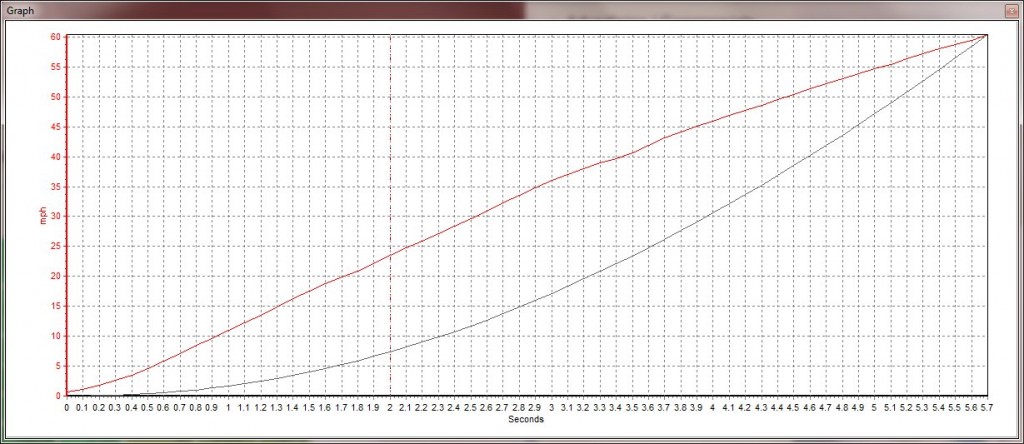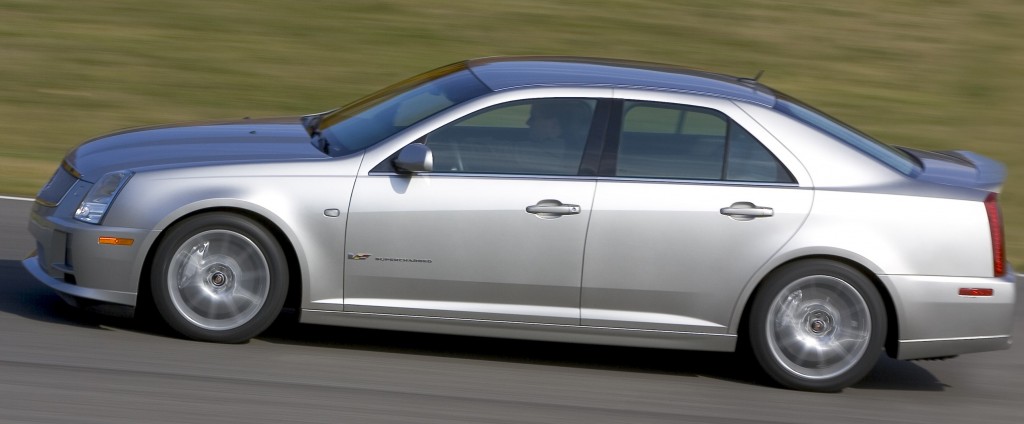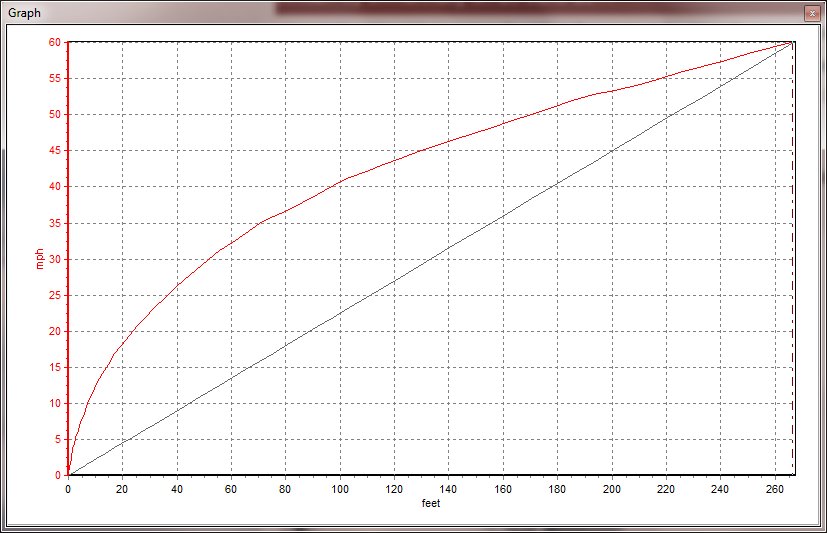This morning it was a fresh 91F out, so I ran some new baselines for the STS-V. Just tickling the 5 sec line at 91F.
Weather: 91.4F; Baro 29.12 Hg. (14.3 psi); Humidity 10%. Fuel: half-tank. Altitude: 600 feet above sea level.
My Cadillac is a 2008 STS-V with a Spectre Intake. This is a 4,233 lb sports luxury V-Series sedan with a 4.4L supercharged & intercooled V8.
Today in hot weather it ran a 0-60 time of 5.42 sec (0 feet-5,280 feet), or 4.98 sec including 1 foot of rollout as at a dragstrip, (1 foot-5280 feet).
The 60′ time for this run was 2.3 sec.
Previous measured times for my STS-V with me driving were 5.39 sec w/rollout and 5.29 sec w/rollout, so today’s time of 4.98 sec w/rollout is an improvement of 0.3 sec. Between the runs I have changed the tires, added the Spectre intake, and changed the MAF. Side by side, today’s run would have been 17 feet ahead of the previous run at 60 mph.
| w/rollout | |||
| Speed(mph) | Time | 0.44 | Dist(f) |
| 10 | 1.01 | 0.57 | 6 |
| 20 | 1.75 | 1.31 | 23 |
| 30 | 2.46 | 2.02 | 49 |
| 40 | 3.31 | 2.87 | 93 |
| 50 | 4.30 | 3.86 | 159 |
| 60 | 5.42 | 4.98 | 248 |
Here is the graph:
Here is a view from HPTuners of the peak near 60 mph for this run showing that I am getting -3.2 degrees of advance due to the ambient and IAT2 / MAT temps at this point; it heads as low as -4 degrees.
I believe that because the boost is calculated from Manifold pressure and barometric pressure, that it reflects boost after the pressure drop across the Laminova intercooler tubes. So some pressure going in, 9.4 psi getting to the engine in this snapshot.
Here was a video of the HP Tuner scan of the 0-60 run:
I captured a second run at 5.45 sec w/o rollout or 5.08 sec from 1 foot.
| w/rollout | |||
| Speed(mph) | Time | 0.37 | Dist(f) |
| 10 | 1.06 | 0.69 | 6.2 |
| 20 | 1.87 | 1.50 | 22.58 |
| 30 | 2.61 | 2.24 | 48.61 |
| 40 | 3.41 | 3.04 | 92.88 |
| 50 | 4.38 | 4.01 | 158.55 |
| 60 | 5.45 | 5.08 | 248.34 |
My rollout is still a bit high — taking too long to get from 0-1 foot. I would like to see rollout around 0.3 sec.
Summary
Today’s run shows a clear improvement from the previous mark. I would like to see under 5 sec without rollout considered.
The IAT Advance is pulling timing from the engine based on the incoming air temp out of the supercharger. Either running the car in cooler weather (!) or improving the intercooler cooling perhaps would help. This is with the stock calibration; it may be possible to simply adjust the tune to be somewhat less aggressive on IAT Advance. Adjusting shift times and possibly RPM may also reduce 0-60 times.





